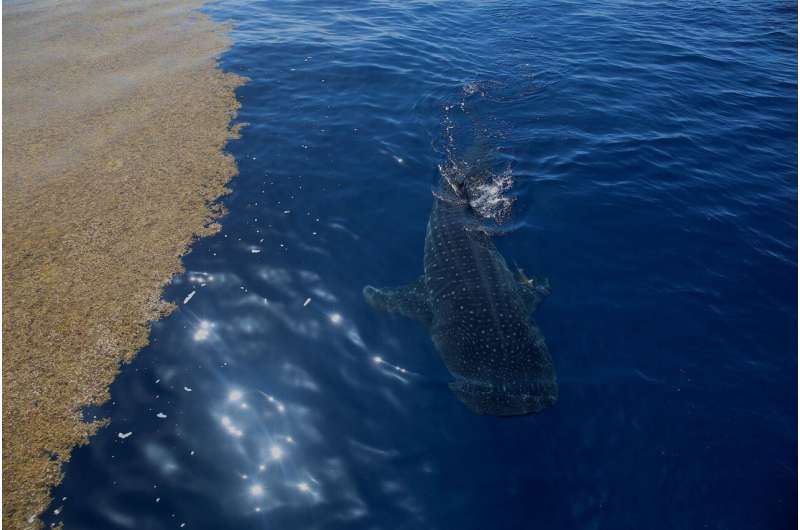Tagged whale shark part of ongoing study by NSU's guy harvey research institute

When it comes to finding one's way, Garmin, Tom-Tom and Google Maps have got nothing on Mother Nature.
As part of ongoing research into the marine ecosystem, researchers in Nova Southeastern University's (NSU) Guy Harvey Research Institute are studying various shark species, including the largest fish in the sea—the whale shark. They are studying many aspects of shark-life—from migratory patterns to their genomics—all with the goal of having the data used to protect these animals for generations to come.
"The more we learn about these animals, their growth dynamics, where they go, what areas may be their nurseries, it can lead to a better understanding of their life history, which is imperative to guide conservation efforts," said Mahmood Shivji, Ph.D., the director of NSU's Guy Harvey Research Institute.
Shivji points to one tagged whale shark—Rio Lady—who in the time she's been tagged (approximately 10 months) has shown incredible migratory ability, making extensive, round-trip journeys. Notably, She's made long forays into the Caribbean and Gulf of Mexico, only to return to nearly the same spot where researchers first met her (she's is currently approaching her tagging site for the third time.). Another whale shark, Milo, has been tracked 351 days and counting, making it the longest duration, continuous track for a whale shark in the Atlantic.
Whale sharks are endangered as they are harvested in many countries for their fins, oils, meat, and other items, and sometimes also victims of ship strikes during their migrations. That's why the research on this species is so vital—learning as much as possible on migratory patterns and more can help those in positions to enact legislation to protect these majestic creatures to do so.
Provided by Nova Southeastern University


















